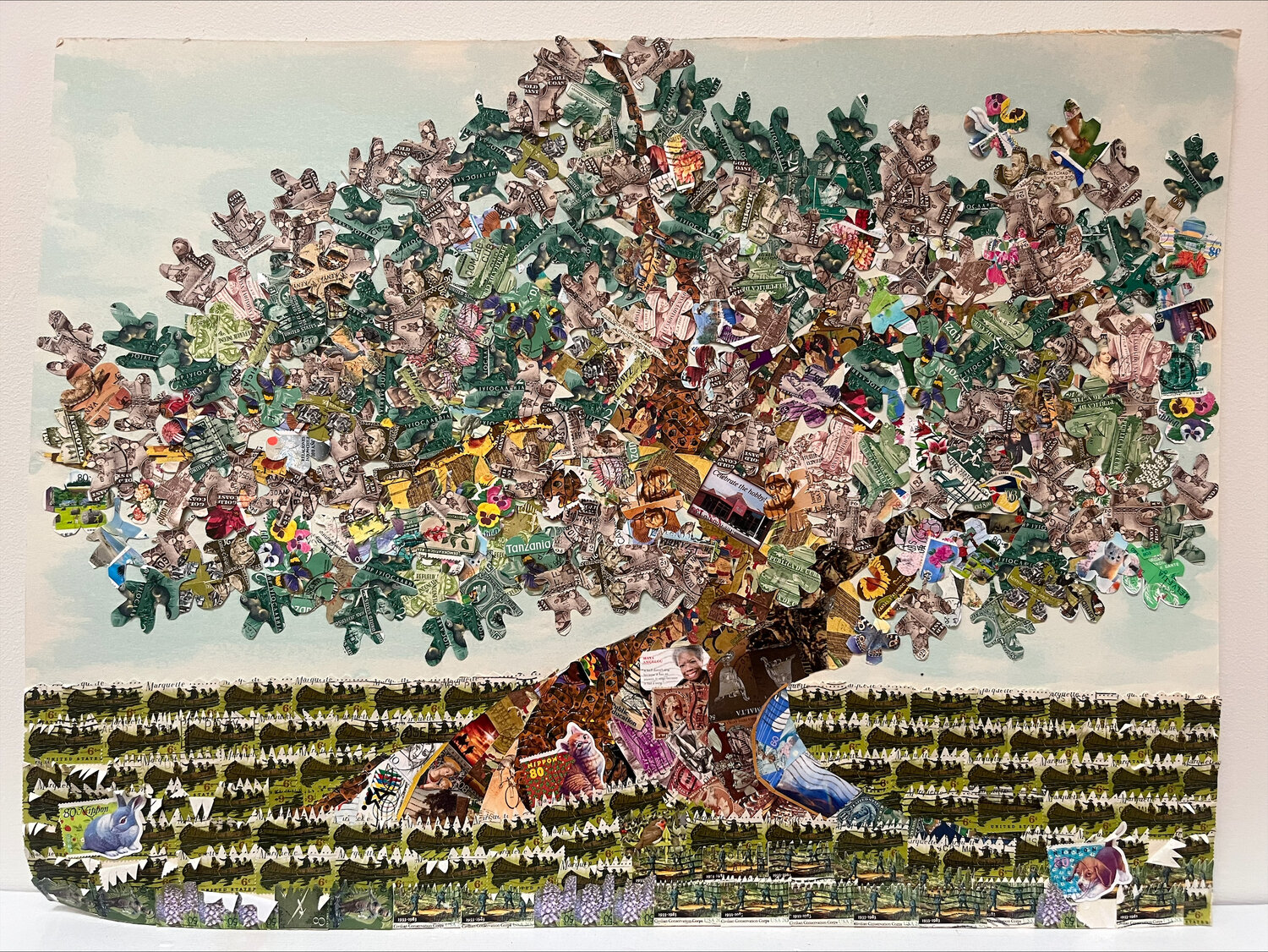At 15, the Holocaust Stamps Project continues to teach tolerance and respect
Fifteen years ago, a fifth-grade teacher at a charter school had a vision for bringing the scope of the unimaginable horror of the Holocaust across to her fifth-grade students. That teacher was Charlotte Sheer and the school was the Foxboro Regional Charter School, in Foxboro, Massachusetts.
Sheer’s students were reading Lois Lowry’s children’s book about the Holocaust, “Number the Stars,” which tells the story of a Danish girl who helps smuggle Jewish families out of German-occupied Denmark during World War II.
During discussions of the book and the Holocaust, Sheer wanted to devise a way of bringing the enormity of the Shoah home to the students. In an interview I did with Sheer for a story in 2017, she shared how the class discussions blossomed into the Holocaust Stamps Project:
“With a number so unfathomable, I challenged the class to try collecting one postage stamp for every person who perished in the Holocaust. Why stamps? They’re small and accessible. The intent was to use stamps as a symbol for something of value being discarded, as millions of people’s lives were thrown away by the Nazis.
“By June that year [2009], they’d struggled to amass about 25,000 stamps. The children were just beginning to sense the enormity of the number 11,000,000. Soon it developed into the Holocaust Stamps Project, and it became a regular component of the school’s Community Service Learning program.”
The project eventually took off, and soon the entire K-12 school enthusiastically got behind the goal of collecting 11 million stamps; 6 million to represent the number of Jews slaughtered by the Nazis and 5 million to represent those of other nationalities and ethnicities targeted by Adolf Hitler and his minions.
Eventually, stamps poured in from 48 states, the District of Columbia and 29 countries. In 2017, the project surpassed 11 million stamps.
The next big announcement related to the project came when the stamps and 18 poignant collages, fashioned from some of the stamps and featuring people and moments from the Holocaust, were chosen for a permanent exhibit at the American Philatelic Center, in Bellefonte, Pennsylvania.
“A Philatelic Memorial of the Holocaust,” featuring the Holocaust stamps, finally opened to the public last June, after numerous delays due to the pandemic.
That was thought to be the last stage of the project, but as it turned out, it wasn’t, as the late radio commentator Paul Harvey was known for saying, the rest of the story.
That took place at the charter school on Jan. 26, the day before the observance of International Holocaust Remembrance Day, when a 5-foot-by-3-foot plastic structure called The Cube was unveiled in the middle school’s lobby.
Filled with 1.5 million stamps, the exhibit, Sheer said, memorializes the 1.5 million children killed during the Holocaust.
I conducted a brief email Q-and-A with Sheer on the significance of the latest exhibit:
Was the vision of The Cube display in the lobby, honoring the memories of the 1.5 million children killed in the Holocaust, always the plan?
Long before the American Philatelic Society offered permanent stewardship of the Holocaust Stamps Project (HSP) at their headquarters in Bellefonte, Pa., [former student life adviser] Jamie Droste and I had discussed and drafted several ideas for how to display the 11 million stamps.
When we considered the weight of, and space needed to house, just 1 million of the paper pieces, it became clear that cube-shaped containers would be the most practical.
The Cube seems to be a most fitting and appropriate tribute to the project. What are you feeling now that this apparently final tribute is in place?
Jamie and I shared a vision for the installation of a display within the school, where 1.5 million stamps would honor the memories of every Jewish child-victim of Hitler’s evil intentions. Seeing The Cube strategically placed in the middle school lobby, where students, staff, parents and visitors would notice it daily, gives me hope that its presence will raise awareness and generate questions as springboards for conversations not only about the history, but also the importance of acceptance and tolerance.
Could you share your thoughts or reflections at this moment, some 15 years after you started this project, about its importance and relevance at this time when antisemitism has reached frightening levels?
The Holocaust Stamps Project began in my classroom in 2009 amidst, what the press described at the time as, a rising global wave of antisemitism stemming from anti-Israel sentiment. Sadly, the HSP’s relevance as a resource for understanding the roots of antisemitism and all forms of intolerance is no less critical today.
The motto at Foxboro Regional Charter School is ‘Enter to Learn, Exit to Lead.’ With its highly diverse student population, my hope is that teachers will maximize what The Cube represents to develop lessons that promote understanding and respect for differences.
LARRY KESSLER (larrythek65@gmail.com) is a freelance writer based in North Attleboro. He blogs at larrytheklineup.blogspot.com.









